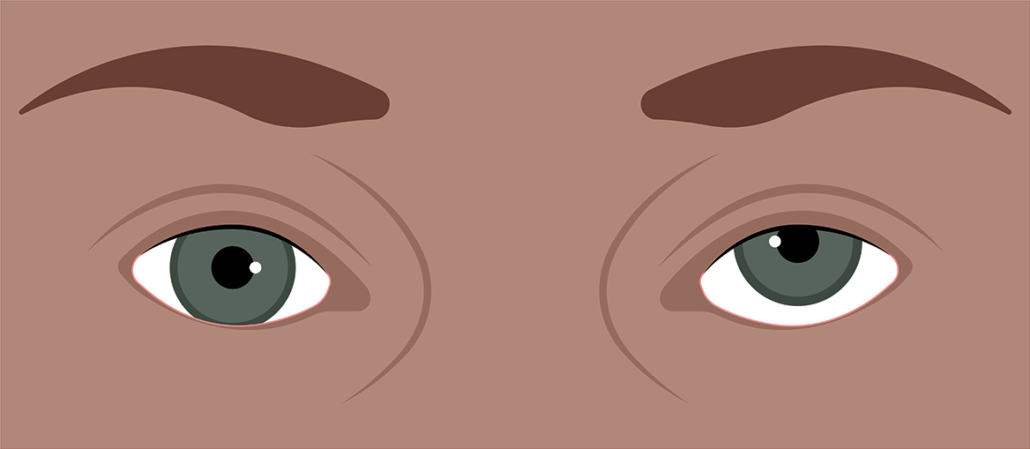When the eyes are vertically misaligned, the eye that sits higher has hypertropia. It is important to remember that strabismus is a problem with the relationship between the eyes; if one eye is higher, the other is lower.
The most common hypertropia is when the muscle that rotates the eye down and in (the superior oblique) is loose. Since the eye is not effectively rotated down and in, the muscle that balances the superior oblique is relatively unopposed and rotates the eye up and out. This rotation causes double vision. To avoid this double vision, patients typically tilt their head to the side opposite the problem. This problem is called superior oblique palsy even though most cases are not an actual palsy (neurologic defect) but, rather, a loose superior oblique muscle tendon.
Superior oblique palsy often presents in early childhood with a head tilt. When possible, it is best to correct the head tile before a child is 2 years old because there can permanent changes in the development of the face from the abnormal head position. In addition, neck muscles and bones can be affected. In older children and adults, most cases of superior oblique palsy have been present since childhood but became more pronounced with time. These patients often complain of eyestrain or headache and may not realize that they are tilting their head. In older adults, superior oblique palsy can be associated with vascular disease; this form of strabismus often gets better on its own. Regardless of the age, or the cause, superior oblique palsy can be managed effectively when properly diagnosed.
Another common cause of hypertropia in adults is thyroid disease, which can affect the eye muscles (Graves’ ophthalmopathy). Graves’ ophthalmopathy can occur in people whose thyroid gland is overactive (hyperthyroid), underactive (hypothyroid), or even normal (euthyroid). Surgery is often needed to eliminate the double vision and abnormal head position.
At other times, a hypertropia is due to a misalignment of the horizontal muscles of the eye; getting the eyes horizontally aligned will then correct the hypertropia. Other causes of hypertropia include stroke, head trauma, tumor, and certain inflammatory disorders.
Ensure Your Child’s Comfort and Eye Health
If your child shows signs of strabismus, don’t wait to seek treatment. Contact us today to schedule a consultation and learn about effective treatment options to restore your child’s eye health and comfort.




